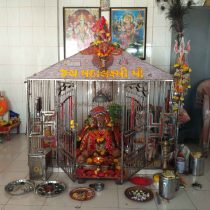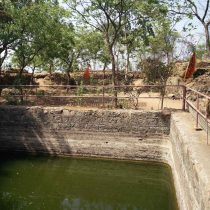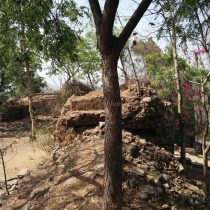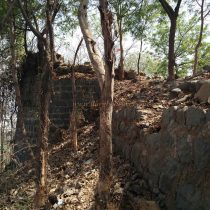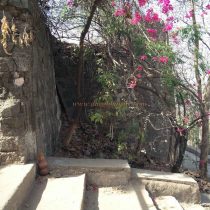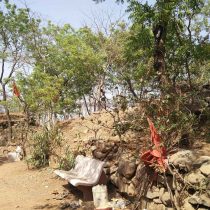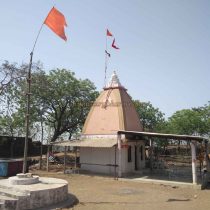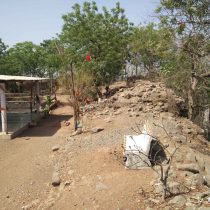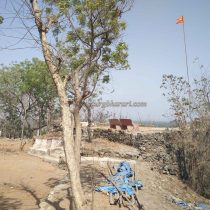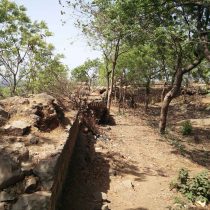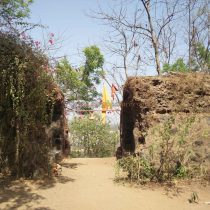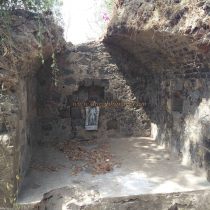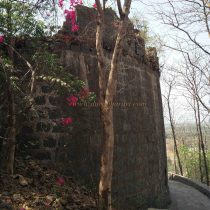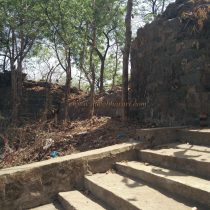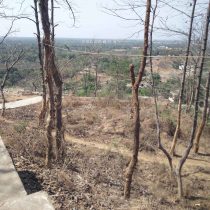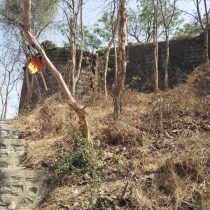ARJUNGAD
TYPE : HILL FORT
DISTRICT : VALSAD
HEIGHT : 232 FEET
GRADE : EASY
There are many forts built during Shivaji Maharaj’s period and the Peshwai period in the border areas of Maharashtra and Gujarat. It has a fort called Arjungad built by Chimajiappa during the Peshwahi period. The fort must have been built to keep an eye on the Kolak River and its environs flowing towards the south of the fort. This region, which was once under the control of Maratha, joined the state of Gujarat while forming a linguistic province and for some other reasons. Since this fort was once under Swarajya, I am mentioning this fort under the heading of forts in Maharashtra. The construction of this fort seems to be completely in Maratha style. This fort on the border of the Portuguese city of Daman was a wake-up call for the protection of Daman, so the Portuguese soon took possession of the fort but it fell back to the Marathas.
...
To reach Arjungad fort, you have to reach Bagwada station via the Vapi-Surat route by train. Bagwada village at the foot of the fort is at a distance of 6 km from Vapi on the Mumbai-Ahmedabad highway. We reach the base of the fort by walking for 10 minutes from the railway station or the highway. This fort is easily visible from Bagwada station and Bagwada Tollbooth, this fort is built on a 125 feet high hill. The locals are not familiar with this hill as a fort but due to the Mahalakshmi temple on the fort, the villagers visit the fort frequently. So, they have built steps to go to the fort. Halfway up the hill, you see two bastions on either side of the road. This path of steps crosses the ramparts here and leads towards the fort. Looking at the work of these bastions and ramparts, it seems that the gate here was destroyed or the construction was partially abandoned. This route takes a detour to the upper bastion of the fort and reaches the east-facing entrance of the fort. The arch of the door is destroyed and there are guard gates on both sides of the inside. The rectangular fort is spread over an area of half an acre. In the center of the fort is the newly built Mahalakshmi temple and next to this temple there is a large square water tank carved in stone. The water in the tank is potable and the same water is used for drinking on the fort. As there is a temple on the fort, the fort is well maintained. The ramparts and bastions of the fort are still in good condition and the entire ramparts can be reached from the curtain wall. Loopholes are constructed in ramparts for firing guns. Walking along the bank, you can see water tanks carved in the rock below the fort on the south side of the fort and Mumbai-Ahmedabad highway on the east side. Half an hour is enough to walk around the entire fort. The history of this fort dates back to the Peshwahi period. After the removal of Raghunathrao from the post of Peshwa by the conspiracy of Barabhai, there was a battle between them. In the year 1776, Arjungad and Indergad forts came under the control of Raghunathrao Peshwa and from there he allied himself with the Portuguese of Goa. The Portuguese of Daman agreed to hand over the two forts with two hundred white soldiers, three hundred local soldiers along with eight to ten guns. But Raghunathrao did not give up control of the fort as he did not trust him. Apart from this, the Peshwa clerk Khando Mukund was on his way to Baroda’s Gaikwad for recovery when he came here from Kalyan and was informed to arrange a journey to his Mandvi. This was referred from a letter in Peshwa’s record.
© Suresh Nimbalkar

